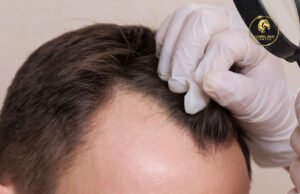When Can You Resume Working Out After a Hair Transplant?
Undergoing a hair transplant is an exciting step towards regaining your natural hairline and confidence. However, it’s essential to follow specific guidelines post-surgery to ensure optimal results and minimize any potential complications.
One common concern among individuals who undergo hair transplant procedures is when they can safely resume their workout routines.
The Healing Process
After a hair transplant, your scalp undergoes a healing process that typically progresses through several stages:
- Initial Recovery (Days 1-7): During this period, your scalp will be in a delicate state. The newly transplanted hair follicles are vulnerable and need time to establish themselves in their new environment.
- Settling Phase (Days 7-14): Your scalp may still be sensitive, and you might experience some mild swelling or discomfort. The transplanted grafts begin to settle into their new positions.
- Early Growth Phase (Weeks 2-4): New hair growth starts to emerge, although it will be very fine initially.
- Established Growth Phase (Months 2-6): The transplanted hair continues to grow, and your scalp gradually returns to normal.
Exercise Guidelines After Hair Transplant
Immediate Post-Operative Period (Days 1-7)
Avoid strenuous exercise that can increase your heart rate or blood pressure, as this can lead to increased bleeding and potentially dislodging the grafts. Avoid lifting heavy weights or any activities that strain the upper body.
Early Recovery Phase (Days 7-14)
You may start light walking or gentle activities and exercises that do not involve bending over or straining the scalp. Try to minimize sweating, as it can irritate the scalp and affect the healing process.
Subsequent Weeks (Weeks 2-4)
Begin to gradually return to normal activity and reintroduce more moderate activities but continue to avoid heavy lifting and intense workouts.
Long-Term Recovery (Months 2-6)
By this stage, you should be able to resume your regular exercise routine, including cardio and weightlifting. However, listen to your body and avoid activities that cause discomfort or strain on the scalp.
Tips for Exercising Safely After a Hair Transplant
- Protect your scalp: If you’re engaging in outdoor activities, wear a hat or apply sunscreen to protect your scalp from sun exposure.
- Stay hydrated: Proper hydration supports overall healing.
- Avoid direct pressure: Be mindful of any activities that could put direct pressure on the transplanted area, such as wearing tight headbands or helmets.
Essential Post-Procedure Guidance
Always follow the specific guidelines provided by your hair transplant doctor. They know your individual case and can provide personalized advice based on your procedure and recovery progress. If you have any concerns or notice unusual symptoms during your recovery, contact your doctor immediately.
Impact of Exercise on Hair Transplant Results
Exercise can indirectly impact your hair transplant results through its effects on blood circulation and overall health. Improved circulation can potentially benefit hair follicle health and growth, but strenuous exercise immediately after a transplant can hinder initial healing.
Moderate exercise, such as walking or light jogging, can promote blood flow to the scalp, which may support healing and hair growth. Regular exercise can help reduce stress levels, which indirectly benefits overall health and potentially supports hair health.
Types of Exercise to Avoid
Certain exercises and activities should be avoided during the early stages of recovery to prevent complications and ensure the success of the transplant. Avoid lifting weights or any activities that strain the upper body and can increase blood pressure. Activities like running or jumping that cause significant head movement or sweating should be avoided to prevent dislodging grafts.
Timeline for Resuming Specific Exercises
The timeline for resuming various types of exercises can vary based on individual healing progress and the specific advice of your doctor. Light cardio activities like brisk walking or stationary cycling can typically be resumed within the first two weeks post-surgery.
However, reintroduce weightlifting and strength training exercises after the initial two-week recovery period, starting with lighter weights and avoiding exercises that strain the scalp.
Nutrition and Hydration
Proper nutrition and hydration are crucial for overall healing and hair health post-transplant. Adequate protein consumption supports tissue repair and hair growth, including lean meats, fish, eggs, and legumes in your diet. Drinking plenty of water to keep your body and scalp hydrated supports the healing process.
Consultation with Your Doctor
Your hair transplant doctor is your best resource for personalized advice regarding post-operative care and exercise. Attend scheduled follow-up appointments to monitor your progress and address any concerns. Your doctor can provide specific recommendations based on your procedure, hair type, and overall health.
Managing Discomfort and Side Effects
It’s normal to experience some discomfort and side effects during the initial recovery period, such as mild swelling and itching around the transplant site. Your doctor may recommend gentle massage or topical treatments to alleviate these symptoms.
Over-the-counter pain relievers may be recommended to manage any discomfort. Doctors might also suggest some additional treatments such as plasma or stem cell therapy.
Long-Term Care for Transplanted Hair
Beyond the initial recovery phase, ongoing care and maintenance are essential for optimal hair transplant results. Use gentle shampoos and conditioners recommended by your doctor to maintain scalp health and support new hair growth. Protect your scalp from trauma or injury that could affect transplanted hair follicles.
Monitoring Hair Growth and Results
It takes time for transplanted hair to fully grow and blend with existing hair. Results vary, but visible improvement typically becomes noticeable within six to twelve months after the procedure. Regularly scheduled follow-up visits allow your doctor to monitor progress and make adjustments as needed.
Educating Yourself About the Procedure
Understanding the hair transplant process and what to expect afterward can help manage expectations and ensure a smoother recovery. Take time to research reputable doctors, different hair transplant techniques, and patient experiences.
Discuss realistic expectations with your doctor based on your hair loss pattern and desired outcomes.
Emotional and Psychological Considerations
Hair loss and its treatment can have emotional implications for many individuals. Lean on friends, family, or support groups during the recovery period. Consider mindfulness techniques, hobbies, or activities that promote relaxation and well-being.
Conclusion
Resuming exercise after a hair transplant requires patience and careful consideration of your body’s healing process. By following these guidelines and listening to your doctor’s advice, you can help ensure successful healing and optimal results from your hair transplant procedure.
Remember, every individual heals at a different pace, so it’s crucial to prioritize your recovery during the initial weeks post-surgery.
Once you’re cleared by your doctor, you can gradually return to your favorite physical activities, including workouts that enhance your overall well-being.
Don’t hesitate, and contact us at Global Hair Dubai to book your free consultation sessions and start your journey to fantastic hair.



